OMG, So Pretty
OMG, so pretty










Stunning Bionic Insects Built From Computer Circuit Boards
UK-based artist Julie Alice Chappell (previously featured here) constructs stunning sculptures of insects with parts of vintage computers and video game systems for her taxonomic collection, called “Computer Component Bugs”. Using parts of Nintendo’s and DVD players, Chappell hopes to raise awareness of environmental waste.
Chappell’s goal is to create an aesthetically beautiful creation, which also offers a socio-political discourse on the reclaimed waste and the destruction of the natural world with art. Chappell’s bionic insects can be found on Etsy shop!
View similar posts here!
More Posts from Stubborn-turtle-blog and Others
debugging is a science. a really boring science, but a science nonetheless.
hypothesis
procedure
results
conclusion
repeating when you don’t get the result you were god damn looking for, why is it still printing that, there are zero print statements in this program what the fuck
I think it's Java? Just really, really bad Java
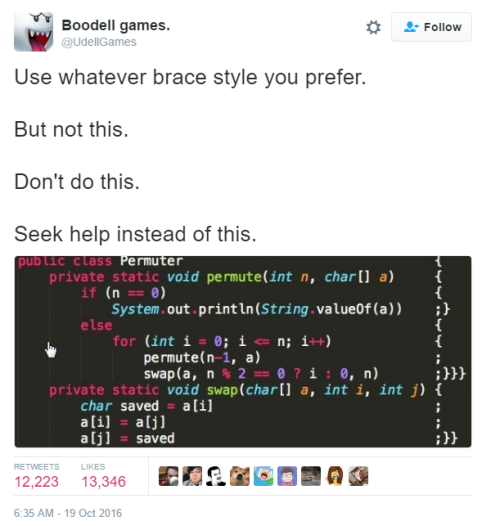
Women need to be able to nurse, and pump, without shame when they return to their work.

Alarming disparities in health outcomes could be prevented by breastfeeding
A new study published in the Journal of Pediatrics showed that black infants had more than twice the deaths of whites attributable to lack of optimal breastfeeding. Black infants also had more than three times the rate of necrotizing enterocolitis, a devastating disease of preterm infants, attributable to suboptimal rates of feeding with their mother’s own milk.
White women initiate breastfeeding at much higher rates than black women and slightly higher rates than Hispanic women; moreover, white women breastfeed longer and have higher rates of exclusive breastfeeding. Current rates for black, white, and Hispanic women were defined as “suboptimal breastfeeding.” This is the first study to show how these disparities translate into differences in health outcomes.
“If mom can’t go to work, she’s not getting paid. This may spell the difference between making rent that month, or keeping the lights on, or paying for basic needs,” said Dr. Melissa Bartick, assistant professor of medicine at Cambridge Health Alliance and Harvard Medical School, and lead author of the study. “When I first saw our results, I cried.”
Melissa C. Bartick, Briana J. Jegier, Brittany D. Green, Eleanor Bimla Schwarz, Arnold G. Reinhold, Alison M. Stuebe. Disparities in Breastfeeding: Impact on Maternal and Child Health Outcomes and Costs. The Journal of Pediatrics, 2016; DOI: 10.1016/j.jpeds.2016.10.028
It is recommended that women breastfeed each child exclusively for the first six months of life, followed by continued breastfeeding while complementary foods are introduced for at least the first year of life. Credit: © gamelover / Fotolia
Something a little more frivolous
I have been all of these at one point or another.
Science Aesthetics
I was feeling inspired last night, so I decided to make this purely for fun.
To the moon and back: Cold, dark nights clutching thermos flasks of hot coffee. Machinery whirring as telescopes trace a star across the sky. Intricate, geometric drawings of the celestial sphere. A messy bun and a NASA t-shirt. Filling in the logbook while punk rock blares in the background to keep you energised and awake. Pictures of nebulae and galaxies everywhere, because pretty space pictures is half the fun. Annoyed huffs every time someone mentions their star sign.
Natural Philosopher: Long, intellectual debates in coffee shops about mathematics, physics, philosophy. Chalkboards covered with equations and calculations in a precise, curving handwriting. That Eureka moment while deep in thought, expressed only with a small smile and a scribbled proof on the back of a serviette. Chaotic desks in front of bookshelves groaning with old textbooks. Antique lab equipment as functional decor.
“Trust Me, I’m a Scientist”: Large computer screens running freshly-typed code. Neat lab books and PDFs of journal articles. The smell of whiteboard markers. Polished new equipment in a tangle of cables, hooked up to a digital oscilloscope. Exact amounts of chemicals in rows in metal shelves. Resting your feet up on the bench after a long day in the lab. The satisfying hum of your colleagues as they work on their experiments around you.
Science Expedition: Dirt under your nails and a loosely-bound collection of field notes. Plant clippings carefully taken to be analysed back in the lab. Soft fur on tough, wild animals. The bitter smoke from eco-friendly firewood while you roast marshmallows and listen to a supervisor’s witty stories. Free-handing diagrams while looking through a microscope. Sketching flowers and that gorgeous ocean view from your last field trip. Reading Darwin on the bus home but falling asleep on your lab partner’s shoulder out of sheer exhaustion after the first three pages.
Life is a Science: Scrolling past an anti-vax facebook post and resisting the urge to burn down the internet. Shiny dissection kits and the sharp smell of formaldehyde. Making time to work out and pack a healthy lunch because your mind is sharpest when your body is well. Debunking the latest superfood fad with peer-reviewed journal articles. Making friends with some of the nicer med school kids in anatomy class. Colour-coded, neatly labelled diagrams and a thousand different terms memorised. Getting a double-helix DNA sculpture for your desk.
What they show on TV isn’t real hacking: Rubbing your eyes after staring at a screen for five hours straight. Having a blank keyboard because all the letters are rubbed off already. Energy drinks in strange colours at strange hours. Being fluent in four different coding languages. Circuit boards and printouts. Ones and zeroes. Running jokes about turning everything off and on again. Rage-quitting when you realise you forgot a comma or a colon somewhere. Black screens with brightly coloured lines. The comforting click-click of fingertips tapping keys. Applying to intern at Google every three months because maybe they’ll take you this time. Writing a piece of code to do something simple just because.
50, 100 years down the line, will this be in the history books? Will the "War on terror" be over?

Battle of Mosul begins as forces push toward Islamic State stronghold.
Way more adorable than drones

Starting in July, 2016, millions of people will encounter single-minded little autonomous robots in the United Kingdom, Germany, and Switzerland as part of the testing program launched by London-based Starship Technologies in tandem with some major industry partners. This launch is a first-of-its kind fleet of autonomous robots, designed to deliver goods within a two- to three-mile radius of a hub and arrive within 15 to 30 minutes.
The robots drive autonomously but are monitored by humans who can take over control at any time. Launched by two Skype cofounders, Ahti Heinla and Janus Friis, Starship Technologies’ aim is to fundamentally reshape how goods are shipped and delivered, and make local delivery almost free.
Phone becomes your weapon if spells aren’t equipped

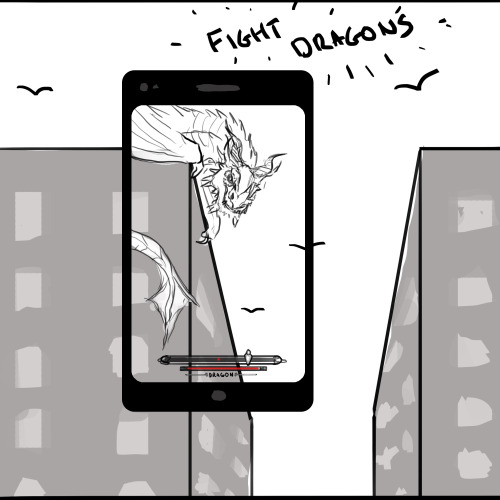
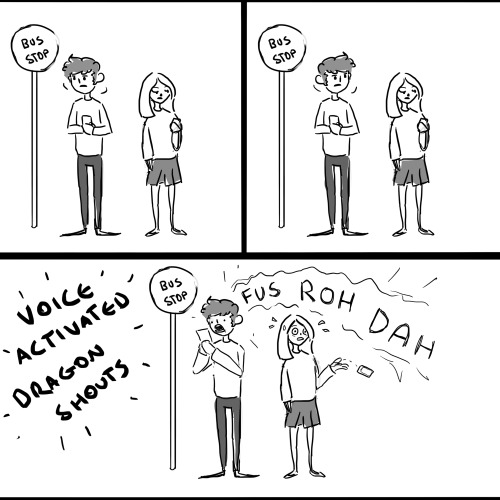
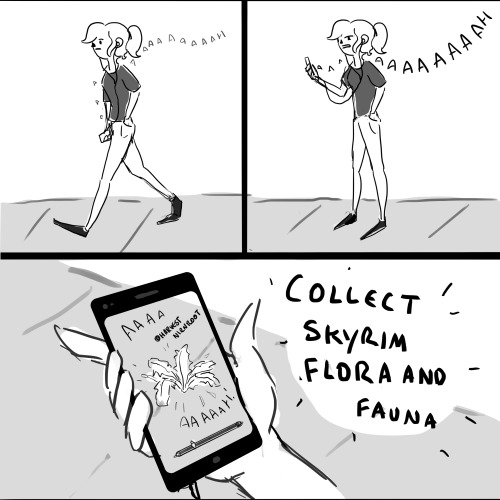
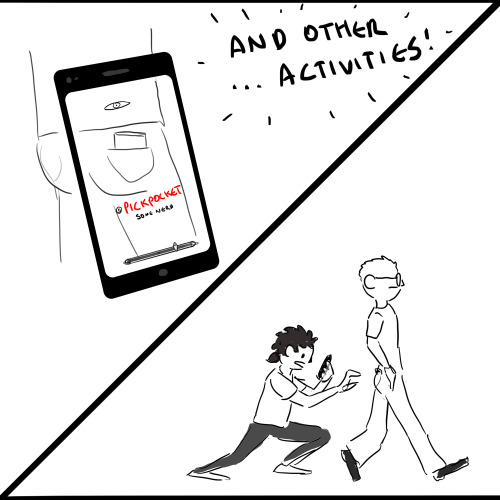
no cheese shop would be safe






RoboAction
Painting series by Dragan Ilić features abstracted mark-making using an industrial robot, sometimes carrying and guiding the artist himself:
The artist constantly transposes into the third dimension his decade’s long-running conceptual practice based on the usage of pencils as the basic draftsman’s tool, starting primarily with the media of performance art, installation and sculpture in extended field. Gradually, over the years, his expressive and mechanical compositions have become even more advanced with the development of modules, diverse in shape and sizes, devices designed for the task of mounting and holding his drawing tools, which has led ultimately to the construction of an appropriate drawing machine. Construed for non-artistic purposes, these robots have been reshaped into special draftsmanship implements with which the author is capable of processing his ideas at far greater speed and with considerably greater precision. The metamorphosis of the artistic work is positioned at a point where human and machine activity intersects, resulting in an interaction that is essentially based on the need to transcend the limitations of the human body.
More Here

"We have set a clear goal vital to the next chapter of America's story in space," writes the President, "sending humans to Mars by the 2030s and returning them safely to Earth."
Let’s go next Space Race
-
 flyg-rl liked this · 5 years ago
flyg-rl liked this · 5 years ago -
 mossworldsstuff reblogged this · 5 years ago
mossworldsstuff reblogged this · 5 years ago -
 mossworldsstuff liked this · 5 years ago
mossworldsstuff liked this · 5 years ago -
 16-bitenthusiast reblogged this · 5 years ago
16-bitenthusiast reblogged this · 5 years ago -
 solarpowered88 liked this · 5 years ago
solarpowered88 liked this · 5 years ago -
 lnipster liked this · 5 years ago
lnipster liked this · 5 years ago -
 marialenoo reblogged this · 5 years ago
marialenoo reblogged this · 5 years ago -
 volumniafox reblogged this · 5 years ago
volumniafox reblogged this · 5 years ago -
 lilaeyedustsofstars reblogged this · 5 years ago
lilaeyedustsofstars reblogged this · 5 years ago -
 deepintotheforests liked this · 5 years ago
deepintotheforests liked this · 5 years ago -
 drone-suggestion reblogged this · 5 years ago
drone-suggestion reblogged this · 5 years ago -
 themeeplies reblogged this · 5 years ago
themeeplies reblogged this · 5 years ago -
 themeeplies liked this · 5 years ago
themeeplies liked this · 5 years ago -
 turtledrive094 liked this · 5 years ago
turtledrive094 liked this · 5 years ago -
 obsidianwolfxredux reblogged this · 5 years ago
obsidianwolfxredux reblogged this · 5 years ago -
 obsidianwolfxredux liked this · 6 years ago
obsidianwolfxredux liked this · 6 years ago -
 marfredux reblogged this · 6 years ago
marfredux reblogged this · 6 years ago -
 grumble-gremlin liked this · 6 years ago
grumble-gremlin liked this · 6 years ago -
 foxy-peter-capaldi reblogged this · 6 years ago
foxy-peter-capaldi reblogged this · 6 years ago -
 lov3ly-lobotomy reblogged this · 6 years ago
lov3ly-lobotomy reblogged this · 6 years ago -
 queers4years reblogged this · 6 years ago
queers4years reblogged this · 6 years ago -
 missladypugg reblogged this · 6 years ago
missladypugg reblogged this · 6 years ago -
 missladypugg liked this · 6 years ago
missladypugg liked this · 6 years ago -
 bowl-of-macaroni reblogged this · 6 years ago
bowl-of-macaroni reblogged this · 6 years ago -
 gr8stonedragon liked this · 6 years ago
gr8stonedragon liked this · 6 years ago -
 karlthefirst reblogged this · 6 years ago
karlthefirst reblogged this · 6 years ago -
 karlthefirst liked this · 6 years ago
karlthefirst liked this · 6 years ago -
 bbl20 reblogged this · 6 years ago
bbl20 reblogged this · 6 years ago -
 bbl20 liked this · 6 years ago
bbl20 liked this · 6 years ago -
 precise-parallax reblogged this · 6 years ago
precise-parallax reblogged this · 6 years ago -
 jonnybxx reblogged this · 6 years ago
jonnybxx reblogged this · 6 years ago -
 iambanane liked this · 6 years ago
iambanane liked this · 6 years ago -
 waterwading reblogged this · 6 years ago
waterwading reblogged this · 6 years ago -
 myoldaeblog reblogged this · 6 years ago
myoldaeblog reblogged this · 6 years ago -
 gamblingwithangels liked this · 6 years ago
gamblingwithangels liked this · 6 years ago -
 jagr15 reblogged this · 6 years ago
jagr15 reblogged this · 6 years ago -
 jagr15 liked this · 6 years ago
jagr15 liked this · 6 years ago
Gaming, Science, History, Feminism, and all other manners of geekery. Also a lot of dance
243 posts
